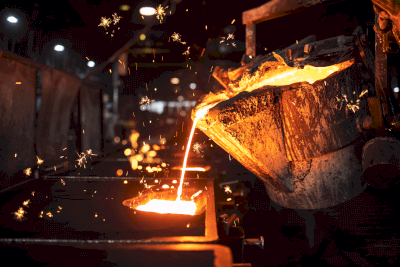What Is Ironwork?
 Ironwork is the processing of iron. Iron is abundant, constituting one-third of the Earth’s weight, making it cost-effective compared to other metals. It is also known for its high strength.
Ironwork is the processing of iron. Iron is abundant, constituting one-third of the Earth’s weight, making it cost-effective compared to other metals. It is also known for its high strength.
For centuries, iron has been widely used worldwide, and today, it accounts for 90% of metal products.
It is also frequently used in alloys such as stainless steel. Iron’s widespread usage is attributed to its ease of workability and versatility in processing.
Uses of Ironwork
Processing is an essential part of using ironwork for parts and products.
For instance, products are formed through casting, where molten material solidifies in a mold, or through cutting and machining using tools. Heat treatment, including quenching and tempering, can alter the metal’s crystal structure, increasing hardness and modifying properties.
Despite its utility, ironwork is prone to rust, so it is often coated after processing.
Types of Ironwork
There are many different types of ironwork, including:
- Cutting Processing
This involves cutting iron using a shearing machine. It’s a crucial process affecting product accuracy and subsequent processing, requiring precise cutting with minimal burrs and warping. - Bending
This is the process of deforming a product to fit a die using a bender machine. The object to be bent is placed on the die and deformed by pressing it with a punch from above. Although simple, this process is prone to distortion and warping. It is an important process that has a significant impact on product quality. - Welding
Welding is the joining of metals by high heat and pressure. There are various types of welding, such as shielded arc welding, which uses a welding rod to generate an arc between base metal, spot welding, which uses heat generated by electrical resistance, and gas welding, which melts and hardens metal solder. Welding strength and precision are especially important for container-shaped products. - Cutting
Cutting is the process of shaving or drilling a hole in metal using a tool. There are two types of machining processes: milling, in which the object is fixed and the machine rotates, and turning, in which the object is rotated. In both cases, the compatibility of the machine and the object must be fully considered, including resistance, temperature, and speed.